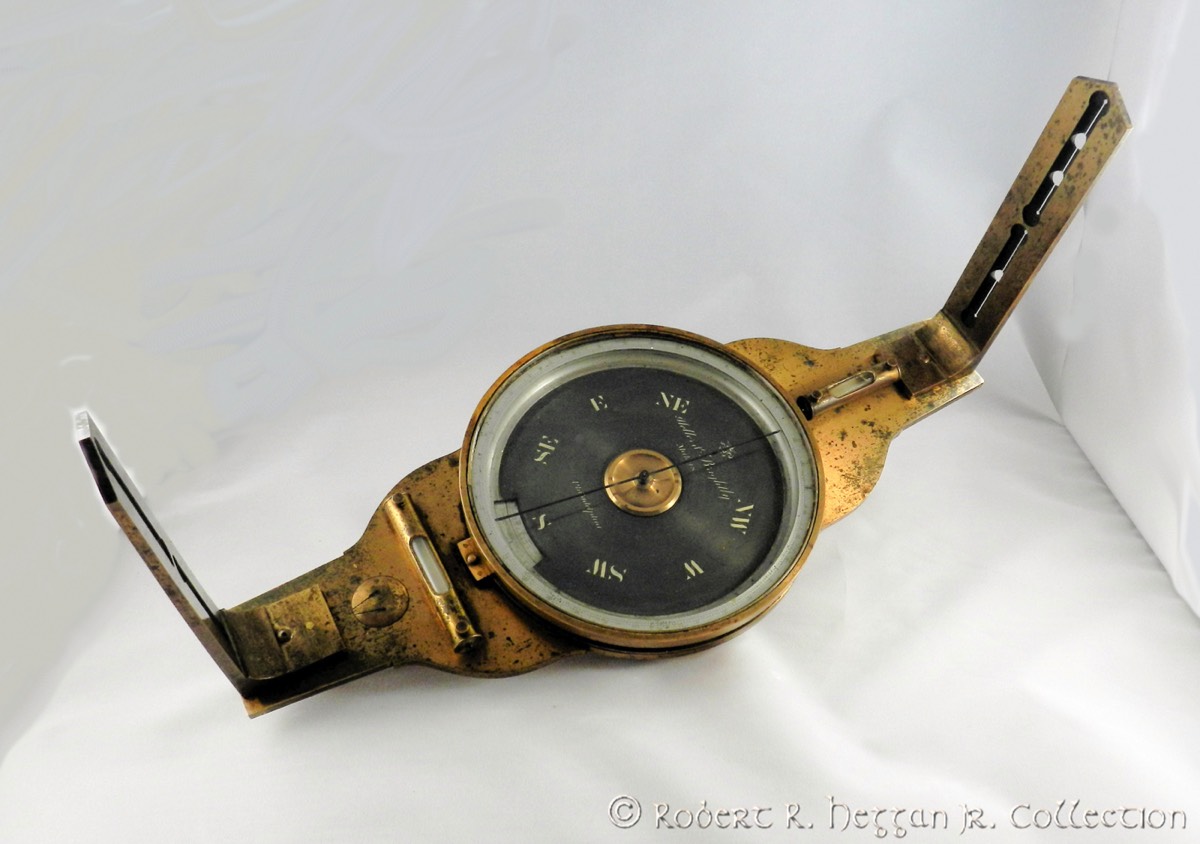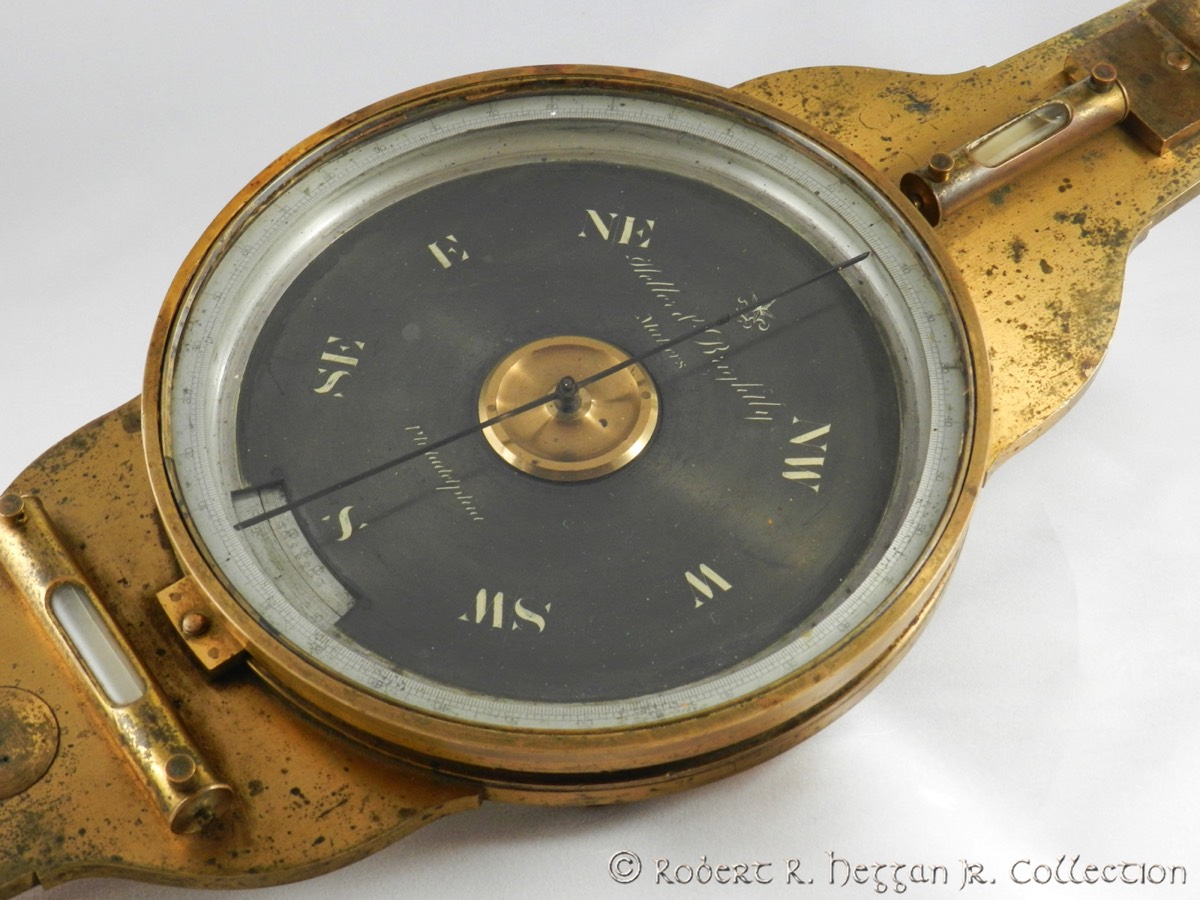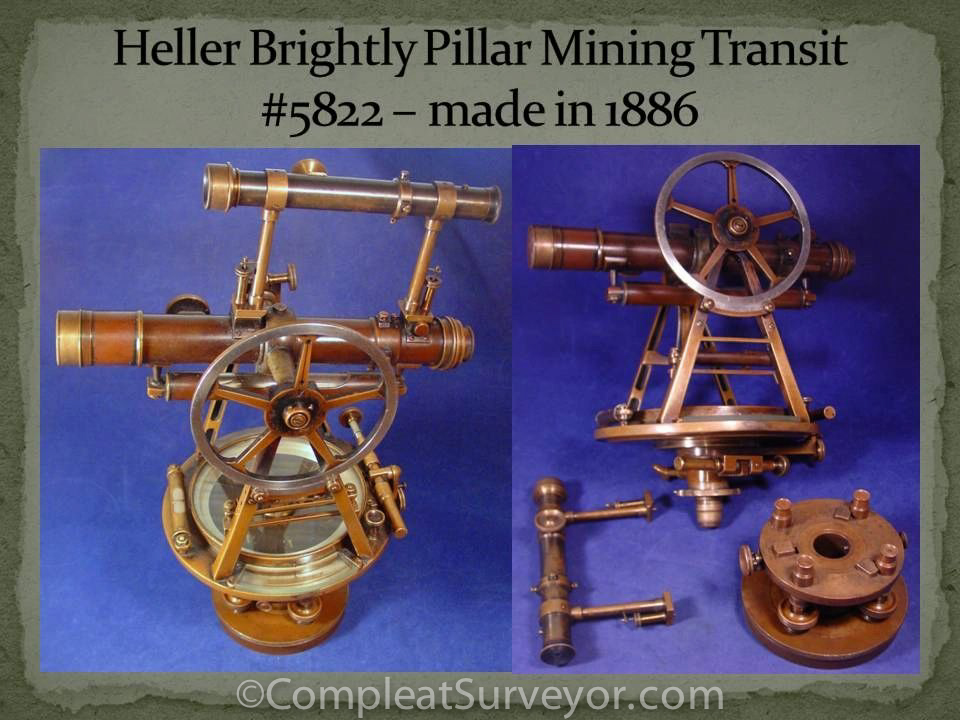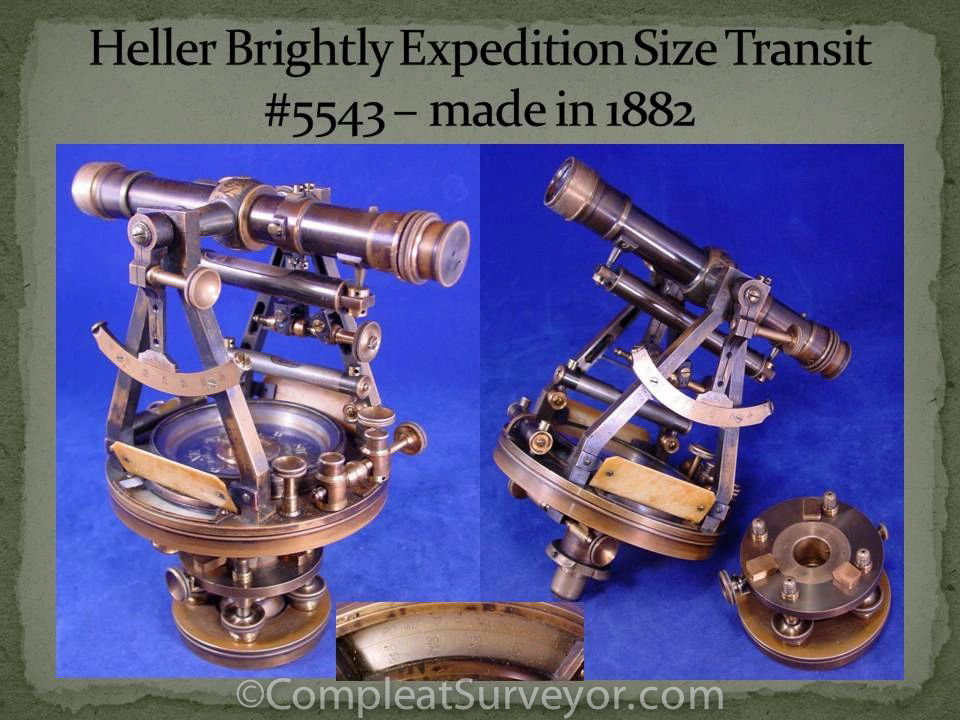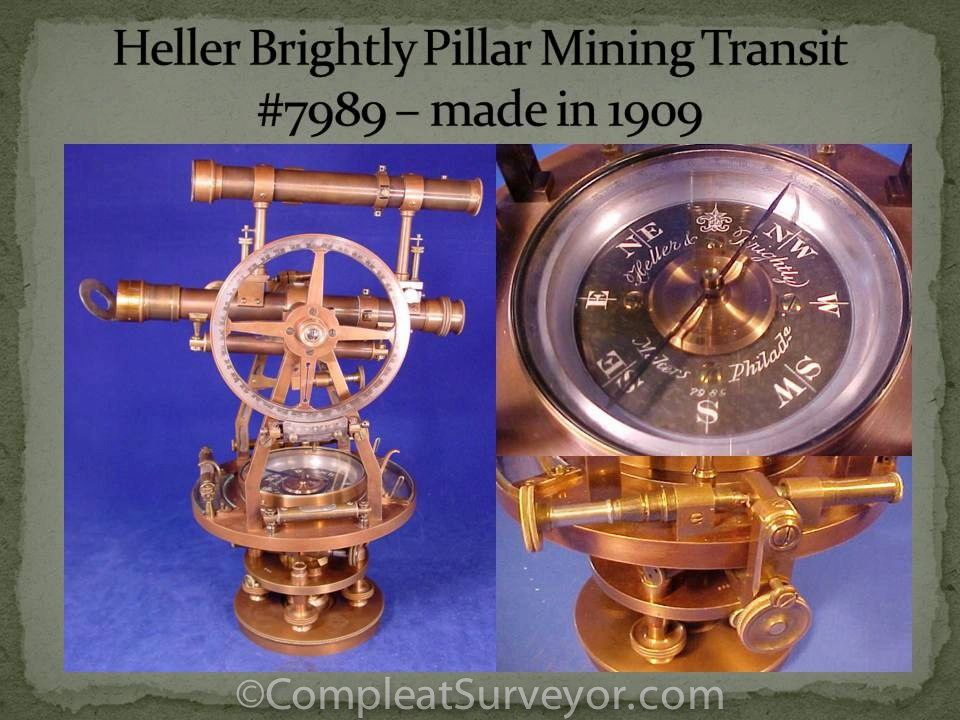
Heller & Brightly
History
Heller & Brightly
Charles S. Heller (1839–1912) was born in Germany, and moved with his family to the United States in the late 1840s. He went to work for William J. Young in 1855, and became a partner in William J. Young & Co. in 1865. Charles H. Brightly (1817–1897) was born in England, arrived in the United States in the 1830s, and worked as a machinist in Philadelphia before going into partnership with Heller and the firm of Heller & Brightly was founded in 1870.
Heller & Brightly announced their wares in a catalog entitled REMARKS on Engineers’ Surveying Instruments, the first edition of which was dated February 1, 1874. Within a few years Heller & Brightly were said to have "done more than any other [firm] in this country of late years to increase competition in the trade, and to wake up the different makers to a sense of the many improvements that may be made in the instruments in common use.
Heller & Brightly was a traditional craft workshop and were used in every state in the union, and in several foreign countries.. There were only a few employees at any one time, each could produce an entire instrument, and each was reasonably well paid. They produced some 100 instruments per year from 1870 to 1887. Annual production rose to 216 instruments in 1891, then dropped precipitously and remained at modest levels thereafter. Each instrument has a serial number, the first being #4000. It is believed that instruments numbered 4100 to 4399 which were marked Wm. J. Young and Co. were actually made by Heller while he was a partner in that firm, so he considered them his own. Most Heller & Brightly instruments were ordered directly from the shop, with only a few sold in stores.
Since most of the instruments made up until Heller’s death in 1912 were produced by just a few makers, it is likely that Heller used some form of internal contracting. George Kegelman said that the lead instrument makers were well paid, and added that they came to work in top hat and tails (not sure if this is literal or figurative). He also said that Heller gave these makers extra money for apprentices.
About 200 instruments per year were made in 1891 but that number dropped to about 35 in 1892, the year that Charles H. Brightly left the firm. After Brightly’s departure Heller used carefully chosen duplicate serial numbers on about 145 instruments, probably to hide from Brightly the number or instruments annually produced. About 20 of Heller’s instruments were marked “Charles S. Heller trading as Heller & Brightly” and a star was added to the serial number. An additional 31 instruments were marked with the star alone, there is no indication of the marking of the additional 94 instruments in this group.
The 1878 catalog lists nine major survey instruments: Complete Transit, Plane Transit, Small Transit, Tunnel Transit, Solar Transit, Plane Table, Small Level, and Plane and Vernier Surveyors Compasses. The most surprising thing about the list of known instruments (from the Heller Brightly records books) is that it contains no Surveyors Compasses, either plane or vernier even though 4 different models of compasses are listed in every catalog from 1878 to 1920. If Heller Brightly produced any surveyors compasses it was before 1888 or else they were not numbered; in either case the number of compasses produced must have been small.
Prior to 1884 the Solar Transits were listed as of the Lyman’s pattern, and after 1889 as Saegmuellers pattern. It is probable that Heller & Brightly made (and recorded) Plane Transits only, and when an order for a Complete Transit was received they added a level, vertical arc, clamp and tangent screw. Likewise with Solar Transits, however the variation plate which was listed as an Extra in the catalog required a specially manufactured transit. Although the first “Sunflower” was made in 1888, no serial numbers were assigned to Sunflowers until 1905; there is nothing to indicate how many of these instruments might have been made during this period. The fact that no tunnel transits are listed is not surprising, since a tunnel transit made in 1878 remained unsold in 1946. From 1900 to 1905 the annual output was roughly the same as in the 1870’s and 1880’s. The drop in 1906 was probably related to the economy of the country; Young and Sons also had problems at this time. After a modest recovery from 1907 to 1910, the output declined again and the rate of decline accelerated after Heller’s death in 1912. Although few instruments were produced in the 1910’s and 1920’s, the shop may have been kept busy with repair work.
Heller Brightly total instrument production appears to be 10,227, of which they sent 86 instruments to foreign countries most in North America. They implied that their European orders were the first for any American instrument maker; William J. Young however had sent instruments to England in the 1840’s.
The firm was incorporated in 1926 and purchased by 3 employees: Herman C. Berger, Albert C. Diffenbacker and Geirge Kegelman. Howard W. Goodall acquired Heller & Brightly in 1929. The firm continued under the management of Richard B. Goodali until the death of Jimmy Shay, the last instrument maker in the shop in 1946. In 1968, when the corporation was dissolved, the tools, unfinished instrument an assortment of instruments by Heller Brightly and other makers, parts, and some original factory records were moved to Maryland and placed in storage.
Ref: Robert C. Miller, "The Heller & Brightly Records," Rittenhouse 4 (1990): 43–55.
Catalogues

Heller & Brightly - One of the big surveying instrument makers in the post civil war period:
1874 Heller & Brightly
1878 Heller Lymans Trigonometer
1886 Heller & Brightly
1888 Heller & Brightly
1889 Heller & Brightly
1901 Heller & Brightly
1920 Heller & Brightly
1925 Heller & Brightly
1930 Heller & Brightly
Labels
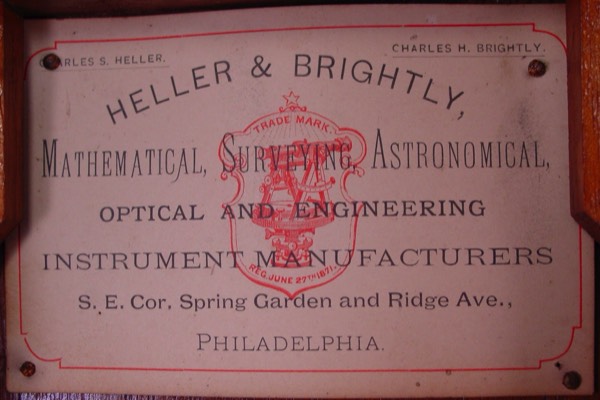
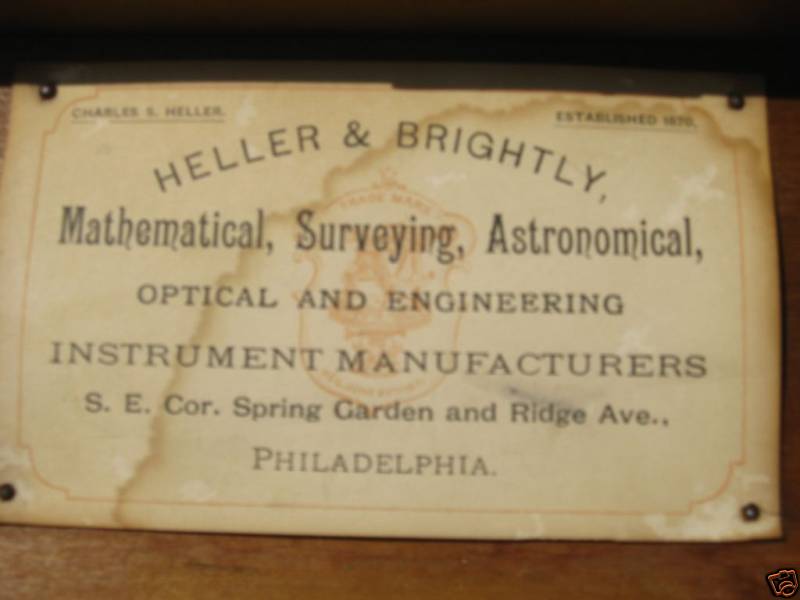
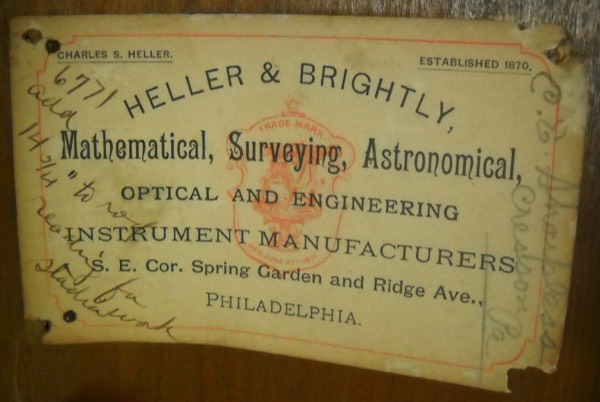
Article #1
Article #2
© 2020 Russ Uzes/Contact Me
